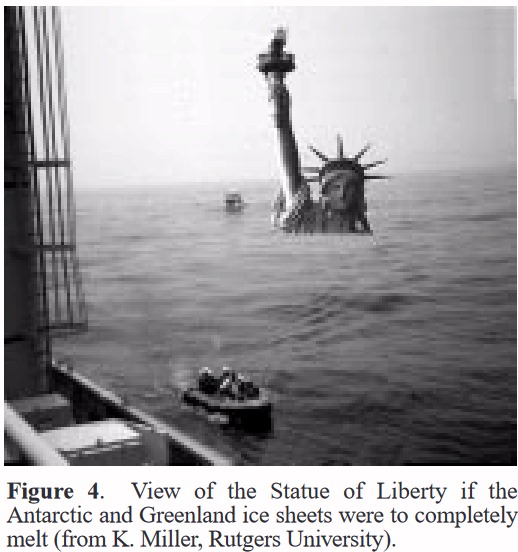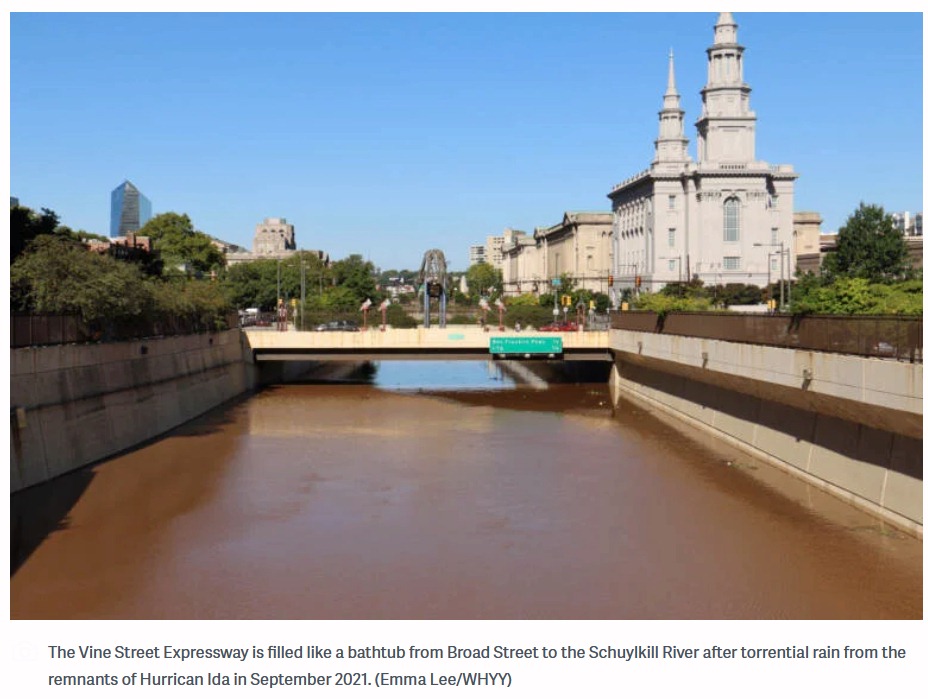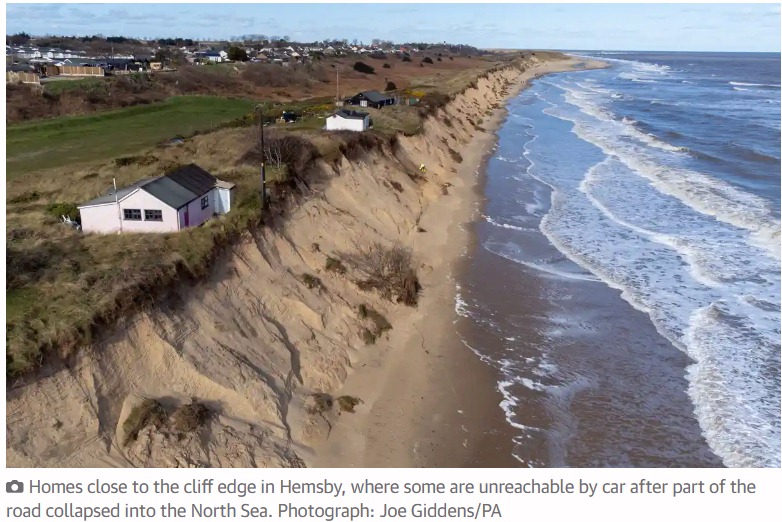

by Sidd Mukherjee and Daniel Brouse
By the Autumn of 2023, it had become evident the West Antarctic and Greenland ice sheets will completely
melt. The process is irreversible and inevitable. What can Earthlings expect to happen to their habitat?
In The Reign of Violent Rain,
Sidd said, "Now I am thinking the violent rain will be a bigger problem before we die... still thinking it through. In the long run, yes, sea level rise will hit big. If you look at the history, it is episodic, and in the fast bits it can go up 3 feet every twenty years for five hundred years (See MWP-1A in fig. 3, supplement). But, the rain intensity is increasing faster today, and drainage cannot cope, whether in the city or out, culverts and such put in over the last hundred years cannot handle. So, I am paying a lot of attention to terrain and drainage far inland from the seacoast (like Ohio.)
In the paper, Sea level and global ice volumes from the Last Glacial Maximum to the Holocene, Kurt Lambeck states,
"The major cause of sea-level change during ice ages is the exchange of water between ice and ocean and the planet's dynamic response to the changing surface load."
On November 20, 2023, the UN's Emission Gap Report
found even if countries carried out their current
emissions-reduction pledges, the world would likely continuously exceed +3C degrees of warming this century. Later that day, the International Cryosphere Climate Initiative released
State of the Cryosphere Report 2023 saying, "Two degrees is too high. Our message -- the message of the Cryosphere -- is that this insanity cannot and must not continue. The melting point of ice pays no attention to rhetoric, only to our actions."
What does this mean about our current human induced climate change?
All of this has a great impact on our weather.
The rain intensity is increasing faster today than ever known. The cool water from the melting ice at the poles is being drawn toward the center of the Earth and getting warmed to record high temperatures. The warm, moist air is circulating and moving over land. These changes in climate systems will cause other areas to experience unprecedented drought. The Amazon River and the Panama Canal recorded their lowest water levels on record during 2023.
What do we expect to happen?
We expect sea level rise will total about 270 feet over the next several millennia. In 1998, the State of New
Jersey published Sea Level Rise in New Jersey with a depiction
of the Statue of Liberty with 270 feet in sea level rise.
In the last melting of the glacial maximum, the first 500 years saw
a "pulse" of
high rate sea level rise of about 500 years duration resulting in about a 66 foot rise in sea levels.
We expect to see a similar pattern in the long run.
Our estimate of 270 feet is based on "the safe" elevation to live -- high-tides, waves, coastal flooding, storm surge, grade of shoreline, etc. would make the lowest elevations for living space to be at least 270 feet above pre-industrial sea levels. This would be the minimum elevation. Personally, I would not want to live that low. As the water submerges sewage treatment plants, landfills, chickens, cows, and all sorts of other bio-hazards, the waters will become toxic. In addition, much of the land will experience salinization making it unfit for plant life. Another concern for elevations under 800 feet is living on an island. Many locations at lower elevations will become isolated. Living on an island has many problems including fresh water, food, shelter,
and healthcare. Security from pirates pilfering, raping, and plundering will likely be the overriding concern.
Of course, I don't expect that to happen for millennia, but I hope government planners do plan for it now. If you look at Florida as an example, parts of the coastline have seen sea levels rise over 14-20 feet in the last decade.
Although the storm surge
was only for hours, you wouldn't want to live there during those hours. Not to mention, the frequency of these extreme weather events will rise exponentially. Thus, our recommendation to evacuate Florida now (i.e. Managed Retreat). The billions of dollars spent to rebuild after Hurricane Ida will all be for naught. Allowing building there will needlessly endanger property and lives. Parts of the world have already seen storm surges of 40 feet. I expect most North American coastlines will see sea levels rise, if only temporarily, by 20-40 feet this century. As far as long run sea level rise, much will depend on location, gravity, isostatic adjustment, and thermal expansion. If the ocean temperatures get warm enough (thermal expansion), parts of the world may see sea levels rise to 270 feet for long periods of times. Other parts of the world, like
Greenland, may actually see sea levels decline. In any event, the Earth
crossed tipping points
this decade which make extreme sea level rise inevitable and irreversible in our lifetimes. Planners should plan on it.
Sidd reiterated, "That 270 feet will take a long time. I would be more careful about the violent rain than the ice melt."
The Short Run This initial "pulse"
will likely have several spikes during the next 500 years with periods of several years in a row
seeing a foot/year in sea level rise. There is estimated to be 4-12 feet of committed sea level rise (ice that has melted but is not yet in the sea.) Greenland is known to have a foot of committed sea level rise that is likely to be released this century.
Chances are slim this will have much of an impact on anybody reading this; however, the inches or feet
of sea level rise that will occur this century will greatly impact the coasts.
The greater impact on
those alive today is the moisture content in the air -- relative humidity.
The greatest short term climate change risk to human health is deadly humid heat (wet-bulb temperature).
The United Nations DRR says:
Water vapor is a powerful greenhouse gas. Since the 1970s, its rise likely increased global heating by an amount comparable to that from rising carbon dioxide. We are now seeing the consequences. In the current climate, for average all-sky conditions, water vapour is estimated to account for 50% of the total greenhouse effect, carbon dioxide 19%, ozone 4% and other gases 3%. Clouds make up about a quarter of the greenhouse effect.
The main greenhouse gases -- carbon dioxide, methane, nitrous oxide and ozone -- don't condense and precipitate. Water vapor does, which means its lifetime in the atmosphere is much shorter, by orders of magnitude, compared to other greenhouse gases. On average, water vapor only lasts nine days. The increased
intensity of precipitation often results in extreme rain events.
Sidd said, "The biggest feedback loop is water vapor. Humans put CO2 in the air. CO2 is a greenhouse gas, so the earth gets warmer. Warmer air can hold more water vapor soaking up more water vapor from the oceans. Water vapor is a greenhouse gas, so it gets even warmer... rinse (sorry!) and repeat. Another interesting thing is that the precipitation (rain, snow, sleet) intensity is increasing."
The most common measure of water vapor in the atmosphere is relative humidity. Deadly humid heat is affecting billions of people today. "It's very disturbing," study co-author Matthew Huber of Purdue University. "It's going to send a lot of people to emergency medical care."
The study Greatly enhanced risk to humans as a consequence of empirically determined lower moist heat stress tolerance was conducted by Purdue and George Mason University and published August 15, 2023. Sweat cannot evaporate and cool the body.
These results indicate that a significant portion of the world's population will experience -- for the first time in human history -- prolonged exposures to uncompensable extreme moist heat. Humans will struggle to adapt to these conditions in a warmer world as they will present widespread challenges across many aspects of food-energy-water security, human health, and economic development including in the world's most populous and most vulnerable regions.
At 3C (5.4F) of yearly average warming, more than 1.5 billion people will suffer. Both 2022 and 2023 saw a record number of heat related deaths. More than 61,000 Europeans died from extreme heat in the summer of 2022.
The largest risk of loss and damage in the short term is
violent rain. Sidd said,
"Now I am thinking the violent rain will be a bigger problem before we die... still thinking it through. In the long run, ya, sea level rise will hit big. If you look at the history, it is episodic, and in the fast bits it can go up 3 feet every twenty years for five hundred years. But, the rain intensity is increasing faster today, and drainage cannot cope, whether in the city or out, culverts and such put in over the last hundred years cannot handle. So, I am paying a lot of attention to terrain and drainage far inland from the seacoast (like Ohio.) By drainage I don't mean just human built. I mean that the natural streams and gullies and ravines have not evolved to a state that can handle the water volumes we see and the worse, larger volumes we will see. So expect huger erosion, steeper slopes to waterways, land collapses and such. Build out your drainage."
You can kind-of imagine the Eastern and Western United States as giant beaches with ever increasing atmospheric
waves splashing down on us. The Gulf Coast will be hit from both sides.
The Eastern US is already seeing violent rain events as far inland as Kentucky.
In both 2022 and 2023, Kentucky
saw historic flooding. Philadelphia is 78 miles from the nearest coast; however, since 2021 Philadelphia
has seen a multitude of individual extreme weather events resulting in more precipitation than
normally falls in an entire month. Besides being hit with Nor'easters and Southeastern tropical storms,
Philadelphia is increasing getting deluges from the Gulf Coast. In the summer of 2021,
the New York Times reported, "The remnants of Hurricane Ida caused flash flooding and a number of deaths and disrupted transit across parts of New York and New Jersey. The storm killed at least 43 people in New York, New Jersey, Pennsylvania and Connecticut and left more than 150,000 homes without power."
Ida's Philadelphia area destruction included 5 deaths, 7 tornadoes, record flooding, hundreds of water rescues, and "one incredibly soggy mess." The main road through Philadelphia (pictured right)
was turned into a canal.
In September of 2023, the Philadelphia Inquirer reported, "The remnants of Tropical Storm Ophelia soaked the entire Philadelphia region with episodic downpours on Saturday, the first day of fall, conspiring to incite 60-mph wind gusts at the Shore and high-tide flooding that closed numerous roads in beach and back-bay towns."
Atmospheric rivers bring heavy rainfall far inland in the Western US causing extreme flooding. In October of 2021 NOAA said, "a convergence of storms brought more than half a foot of rain to parts of the Bay area in addition to strong winds, flash floods, and mud/landslides. They also bring the potential for heavy snow to higher elevations in the Sierra Nevada mountain range." (Atmospheric River Hits the West Coast) In December 2022 and January 2023, California experienced nine back-to-back atmospheric rivers; the longest stretch of continuous atmospheric river conditions on record. NOAA went on to report, "Several atmospheric rivers struck in March 2023, bringing heavy rain and snowfall to much of the West. According to the California Department of Water Resources, the statewide snowpack was among the deepest ever recorded for the end of March -- 237% of normal."
Sidd added, "The bigger rain will get people far from coasts."
Read more from The Reign of Violent Rain.
UPDATE: Lawsuit Over Violent Rain and Lower Moist Heat Stress Tolerance
"The collapse of the road made so many more things a struggle," Jordan said. "From emergency services to bin collections, grocery shopping and even the post, it's been one thing after another. It feels like we're being forgotten up here."
In a care home 200 miles away, in Wetherby, West Yorkshire, lives Doug Paulley, a co-claimant in the case.
"During last year's heatwaves in the UK, I practically had to hibernate to get through it, and couldn't venture outside," said Paulley. According to the Health Security Agency 2,803 excess deaths occurred during the summer of 2022. Those with medical conditions, older people and very young children were especially at risk.
And now, in a case believed to be the first of its kind, Jordan is taking the government to court, alleging its failure to set out lawful "adaptation objectives" in its latest plan is a breach of his human rights.
* Our climate model uses chaos theory in an attempt to adequately account for humans and forecasts a global average temperature increase of 9 degrees Celsius above pre-industrial levels. Everybody has the responsibility not to pollute. Stop using fossil fuels. Consume less. Love more.
ALSO SEE:
Sea-level Rise: Greenland and the Collapse of the East Antarctic Ice Sheet Mukherjee and Brouse (2022 and 2023)
The Age of Loss and Damage Brouse (2023)
How is All Real Estate at Risk From Climate Change? Brouse and Mukherjee (2024)
October 29, 2023
1) We should expect to see rising sea levels.
2) Approximately half of the current sea level rise is due to thermal expansion. As water gets warmer,
it expands. NASA says, "About half of the measured global sea level rise on Earth is from warming waters and thermal expansion."
3) There is a very complex set of climate systems impacted by sea level rise. The shape of the Earth is changing and speeding up as ice from the poles melts and is drawn toward the equator through centrifugal and gravitational
forces, as well as, glacial isostatic adjustment. A study published in Geophysical Research Letters of the American Geophysical Union suggests that global warming has led to significant melting of glaciers due to which our planet's axis of rotation has been moving faster since the 1990s.
The Long Run
A high rate of sea-level rise starting at ∼14.5 ka BP of ∼500 y duration. The onset occurs at the start of the Bølling−Allerød warm period. Its duration could be <500 y because of uncertainties in chronology, and the globally averaged rise in sea level of ∼20 m occurs at a rate of ∼40 mm⋅y−1 or greater. This pulse, MWP-1A, has been identified separately in the records of Barbados, Sunda , and Tahiti. Spatial variation in its amplitude can be expected because of the planet’s elastic and gravitational response to rapid unloading of ice in either or both of the two hemispheres with, based on the ice−earth models used here, model-predicted values ranging from ∼14 m for Barbados to ∼20 m for Tahiti. This compares with observational values of ∼15–20 m for Barbados and 12–22 m for Tahiti. Observational uncertainties remain large, including differences in the timing of this event as recorded at the different localities, and it is not possible from this evidence to ascertain the relative importance of the contribution of the two hemispheres to MWP-1A.
By 2020, there was enough data to see the doubling time
of some anthropogenic climate affects had gone from 100 years to 10 years. For instance, the rate of sea level rise
has gone from about 1.5 millimeters per year to over 3 millimeters. We expect to see the doubling period to
continue to shrink raising the possibility of sea levels rising a foot/year by 2050.
For every degree Celsius in warming, the water-holding capacity of the atmosphere increases by about 7%. Record-high sea temperatures ensure there is more moisture (in the form of water vapor) in the atmosphere, by an estimated 5-15% compared to before the 1970s, when global temperature rise began in earnest.


On November 1, 2023, the Guardian reported:
When Kevin Jordan bought his seaside home in Hemsby, Norfolk, he was told it would be safe for a century. In the decade since, 17 of his neighbours' homes have had to be demolished, or have been swept away into the waters of the North Sea. His is now just 5 metres from the fast-crumbling cliff, isolated and unreachable by car after part of the road collapsed into the North Sea.
Toppled Tipping Points: The Domino Effect Brouse and Mukherjee (2023)